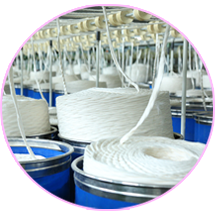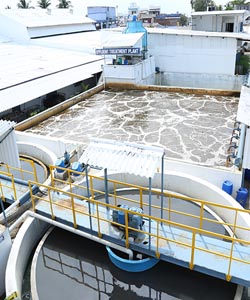The unit adopts stringent practices to safeguard our green enviornment by the installation of state of the art ZERO DISCHARGE effluent treatment with enviornmentally safe process and with equipment's like Ultrafiltration, Reverse Osmosis Stages 1,2,3 & 4 fully controlled automatically by SCADA systems followed by Four effect Multiple evaporator for final reject handling (FIRST of its kind in Erode area) along with strict energy saving utility procss machineries
To ensure quality with productivity, the unit engages skilled employees with varied experience pioneered by motivation.



We at, VKS Textiles, shall continuously strive to improve and provide quality service to meet the multi various needs of the textile industry. This service shall be aimed at enhancing satisfaction of our customers and thus becoming their “NATURAL CHOICE”.
As an environmentally concerned organization we have made substantial contribution in this regard.
We at VKS Textiles, aim to continuously improve our environmental performance, considering the impact of our processes on the environment and move towards being an ‘ECO-FRIENDLY’ Organization.





